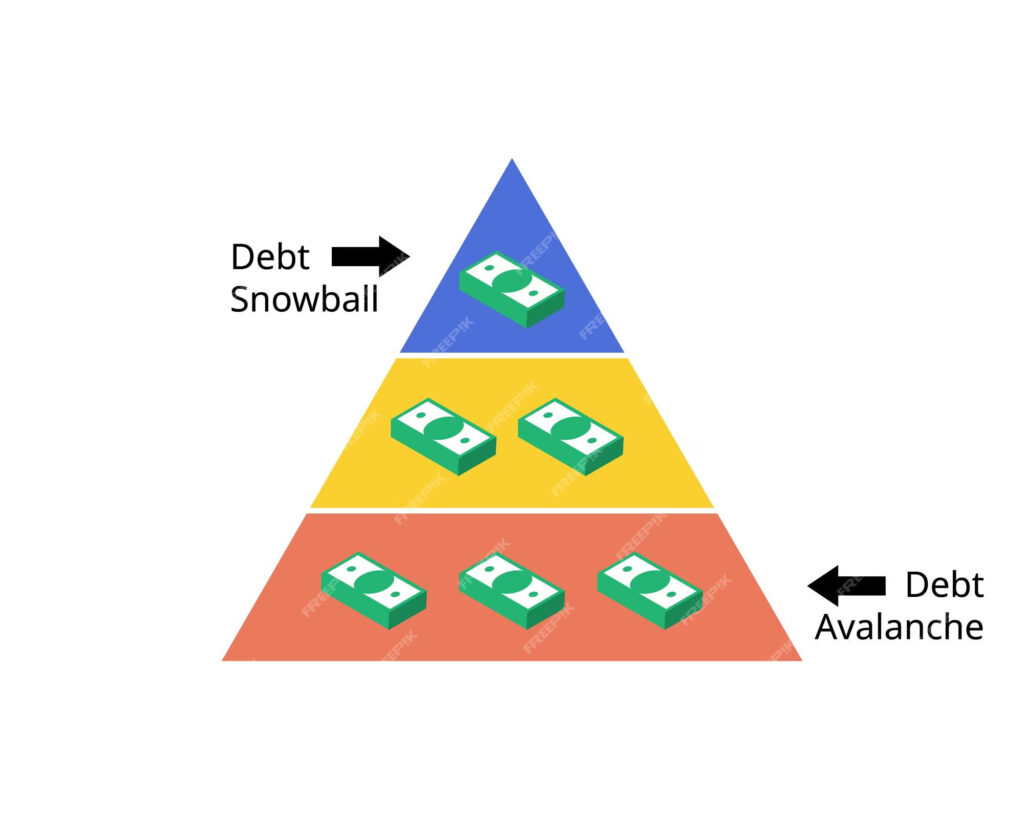Are you drowning in debt and feeling overwhelmed by the seemingly insurmountable task of paying it off? If so, you’re not alone. Many people find themselves trapped in a cycle of debt, struggling to make ends meet. But there is hope, and it comes in the form of the debt snowball method.
The debt snowball method is a highly effective strategy for paying off debt fast. It involves organizing your debts from smallest to largest and then tackling them one at a time, starting with the smallest. By focusing all your extra money and resources on paying off the smallest debt first, you can quickly gain momentum and experience a sense of accomplishment as you eliminate each debt one by one.
How the Debt Snowball Method works
The debt snowball method is based on the idea that paying off small debts first provides the motivation and momentum needed to tackle larger debts. Here’s how it works:
- Creating a list of debts: The first step in implementing the debt snowball method is to create a comprehensive list of all your debts. This includes credit card balances, personal loans, student loans, and any other outstanding debts you may have. It’s important to include the current balance, minimum monthly payment, and interest rate for each debt.
- Prioritizing debts based on size: Once you have a list of all your debts, you’ll need to prioritize them based on their size. Start by identifying the smallest debt and rank the rest in ascending order. This step is crucial because it sets the foundation for the debt snowball method. By focusing on the smallest debt first, you’ll be able to quickly eliminate it and gain momentum.
- Making minimum payments on all debts: While you’re focusing on paying off the smallest debt, it’s important to continue making minimum payments on all your other debts. This ensures that you stay current on all your obligations and avoid any negative consequences, such as late fees or a decrease in your credit score.
- Focusing on paying off the smallest debt first: Now comes the exciting part – paying off the smallest debt! Take any extra money you have available, whether it’s from cutting back on expenses or increasing your income, and put it towards paying off the smallest debt. By concentrating your efforts on one debt at a time, you’ll be able to see progress quickly, which will motivate you to keep going.
- Rolling over payments to the next debt: Once you’ve paid off the smallest debt, it’s time to move on to the next one. Take the money you were using to pay off the smallest debt and roll it over to the next debt on your list. This means that you’ll be paying more than the minimum payment on the next debt, allowing you to pay it off faster.
- Tracking progress and staying motivated: Throughout the debt snowball method process, it’s essential to track your progress and celebrate each milestone. This could be as simple as crossing off a debt on your list or rewarding yourself with a small treat for reaching a specific milestone. By acknowledging your achievements along the way, you’ll stay motivated and inspired to continue on your debt-free journey.
Benefits of using the Debt Snowball Method
The debt snowball method offers several benefits that make it an attractive strategy for paying off debt. Here are some of the key advantages:
- Psychological motivation: The debt snowball method harnesses the power of psychology to keep you motivated throughout your debt repayment journey. By starting with the smallest debt, you experience a sense of accomplishment early on, which fuels your motivation to continue paying off your debts.
- Quick wins: Paying off the smallest debts first provides you with quick wins and a sense of progress. This can be incredibly motivating and helps you build momentum as you move on to larger debts.
- Simplified management: By focusing on one debt at a time, the debt snowball method simplifies the management of your debts. Instead of juggling multiple payments and due dates, you only need to concentrate on paying off one debt before moving on to the next.
- Financial freedom: The ultimate goal of the debt snowball method is to achieve financial freedom by becoming debt-free. By following this method, you’ll gain control over your finances, reduce stress, and free up money for other financial goals.
Steps to implement the Debt Snowball Method
Now that you understand how the debt snowball method works and the benefits it offers, let’s dive into the step-by-step process of implementing this strategy effectively:
Step 1: Creating a list of debts
The first step in implementing the debt snowball method is to create a comprehensive list of all your debts. This includes credit card balances, personal loans, student loans, and any other outstanding debts you may have. Be sure to include the current balance, minimum monthly payment, and interest rate for each debt. This list will serve as your roadmap as you work towards becoming debt-free.
Step 2: Prioritizing debts based on size
Once you have a list of all your debts, it’s time to prioritize them based on their size. Start by identifying the smallest debt and rank the rest in ascending order. This step is crucial because it sets the foundation for the debt snowball method. By focusing on the smallest debt first, you’ll be able to quickly eliminate it and gain momentum.
Step 3: Making minimum payments on all debts
While you’re focusing on paying off the smallest debt, it’s important to continue making minimum payments on all your other debts. This ensures that you stay current on all your obligations and avoid any negative consequences, such as late fees or a decrease in your credit score. Make a budget and allocate enough money to cover the minimum payments for each debt.
Step 4: Focusing on paying off the smallest debt first
Now comes the exciting part – paying off the smallest debt! Take any extra money you have available, whether it’s from cutting back on expenses or increasing your income, and put it towards paying off the smallest debt. By concentrating your efforts on one debt at a time, you’ll be able to see progress quickly, which will motivate you to keep going.
Step 5: Rolling over payments to the next debt
Once you’ve paid off the smallest debt, it’s time to move on to the next one. Take the money you were using to pay off the smallest debt and roll it over to the next debt on your list. This means that you’ll be paying more than the minimum payment on the next debt, allowing you to pay it off faster. Continue this process until all your debts are paid off.
Step 6: Tracking progress and staying motivated
Throughout the debt snowball method process, it’s essential to track your progress and celebrate each milestone. This could be as simple as crossing off a debt on your list or rewarding yourself with a small treat for reaching a specific milestone. By acknowledging your achievements along the way, you’ll stay motivated and inspired to continue on your debt-free journey.
Conclusion
The debt snowball method is a powerful strategy for paying off debt fast and achieving financial freedom. By organizing your debts from smallest to largest and focusing on paying off one debt at a time, you can gain momentum and stay motivated throughout your debt repayment journey. Take the first step today by creating a list of your debts and start implementing the debt snowball method. Say goodbye to the burden of debt and hello to a brighter financial future.


